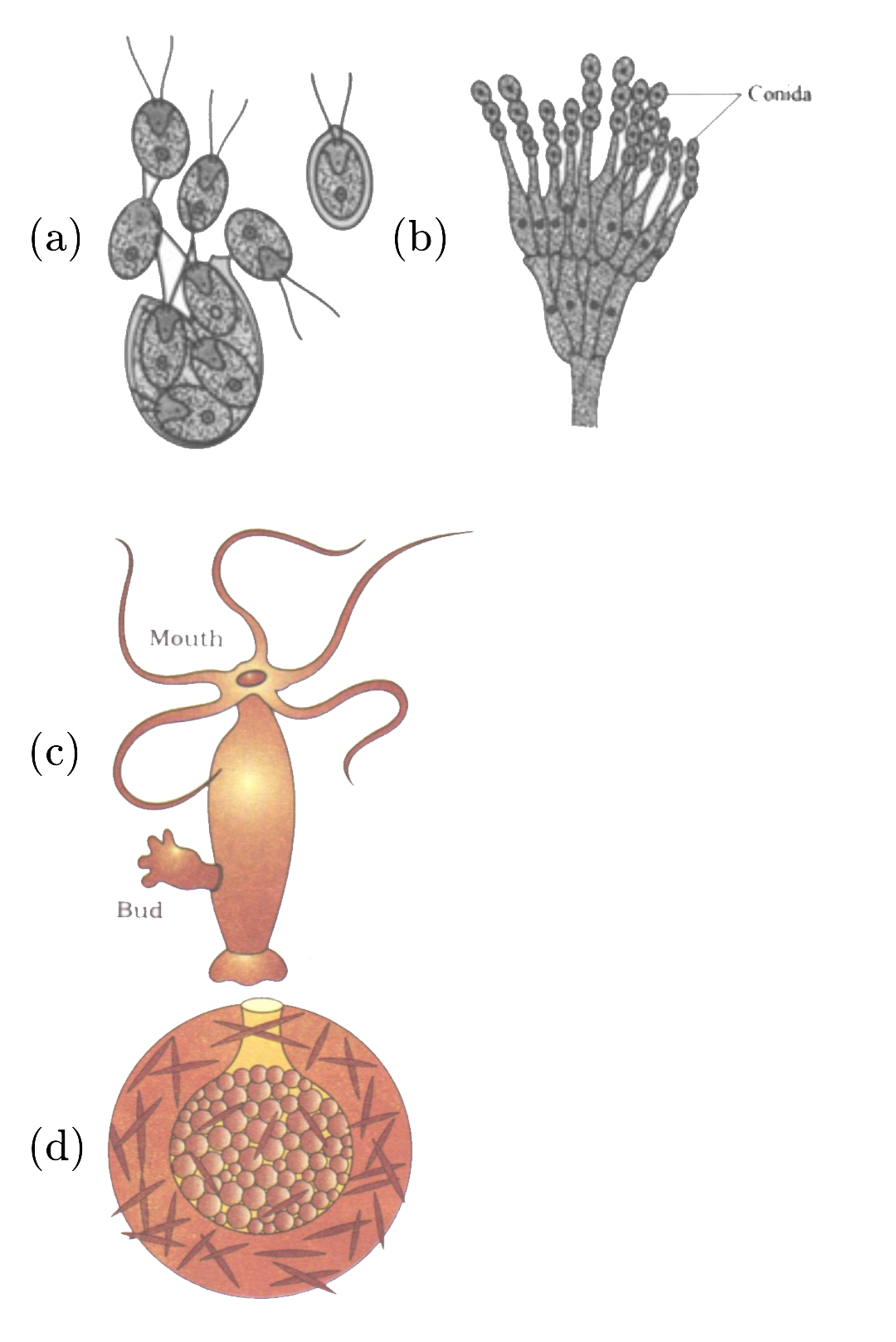In Spirogyra sexual reproduction occurs through
(a) Conjugation
(b) Physiological isogamy
(c) Morphological anisogamy
(d) Oogamy
Conjugation
Physiological isogamy
Morphological anisogamy
Oogamy.
The correct Answer is:A
To solve the question regarding the sexual reproduction process in Spirogyra, we will analyze the options provided and identify the correct answer step by step.
Step 1: Understand the Question
The question asks about the method of sexual reproduction in Spirogyra. We need to evaluate the given options to determine which one correctly describes this process.
Step 2: Review the Options
The options provided are:
(a) Conjugation
(b) Physiological isogamy
(c) Morphological anisogamy
(d) Oogamy
Step 3: Analyze Each Option
- Option (a) Conjugation: This is a known method of sexual reproduction in Spirogyra where two filaments of opposite mating types come together and fuse, leading to the formation of a zygospore.
- Option (b) Physiological isogamy: This refers to the fusion of gametes that are morphologically similar but may differ in physiological traits. This is not the method used by Spirogyra.
- Option (c) Morphological anisogamy: This involves the fusion of two dissimilar gametes (male and female). Spirogyra does not reproduce this way.
- Option (d) Oogamy: This is a form of sexual reproduction involving a large non-motile egg and a small motile sperm. Spirogyra does not exhibit this type of reproduction.
Step 4: Identify the Correct Answer
Based on the analysis, the correct answer is (a) Conjugation. In Spirogyra, sexual reproduction occurs through conjugation, where two opposite strains fuse to form a zygospore.
Final Answer
The correct answer is (a) Conjugation.
---
The question asks about the method of sexual reproduction in Spirogyra. We need to evaluate the given options to determine which one correctly describes this process.
The options provided are:
(a) Conjugation
(b) Physiological isogamy
(c) Morphological anisogamy
(d) Oogamy
- Option (a) Conjugation: This is a known method of sexual reproduction in Spirogyra where two filaments of opposite mating types come together and fuse, leading to the formation of a zygospore.
- Option (b) Physiological isogamy: This refers to the fusion of gametes that are morphologically similar but may differ in physiological traits. This is not the method used by Spirogyra.
- Option (c) Morphological anisogamy: This involves the fusion of two dissimilar gametes (male and female). Spirogyra does not reproduce this way.
- Option (d) Oogamy: This is a form of sexual reproduction involving a large non-motile egg and a small motile sperm. Spirogyra does not exhibit this type of reproduction.
Based on the analysis, the correct answer is (a) Conjugation. In Spirogyra, sexual reproduction occurs through conjugation, where two opposite strains fuse to form a zygospore.
The correct answer is (a) Conjugation.
Topper's Solved these Questions
- KINGDOM PLANTAE OR METAPHYTA BOOK - DINESH PUBLICATION ENGLISHCHAPTER - KINGDOM PLANTAE OR METAPHYTA EXERCISE - CYG
20 Videos
- KINGDOM MONERA (THE PROKARYOTES)BOOK - DINESH PUBLICATION ENGLISHCHAPTER - KINGDOM MONERA (THE PROKARYOTES)EXERCISE - CHECK YOUR GRASP
20 Videos
- KINGDOM PROTISTA (UNICELLULAR EUKARYOTES)BOOK - DINESH PUBLICATION ENGLISHCHAPTER - KINGDOM PROTISTA (UNICELLULAR EUKARYOTES)EXERCISE - CHECK YOUR GRASP
19 Videos
Similar Questions
Knowledge Check
Study the following figures and select the correct statements regarding these.

(i)A shows mode of asexual reproduction in sponges through internal buds.
(ii)B shows sexual reprodction through zoospores in Chlamydomonas.
(iii) C shows asexual reproduction through fragmentation in Penicullium.
(iv) D shows external budding in Sycon.A(i) and (ii)BSmaller organisms always have shorter life span and vice versa.C(ii), (iii), and (iv)D(i) and (iv)
Activity of phagocytosis occurs through
(a) Neutrophils and monocytes
(b) Basophils and monocytes
(c) Eosinophils and monocytes
(d) Lymphocytes and neutrophils
View SolutionSelect the correct statements regarding the figures given below

(i) (a) shows asexual reproduction through zoospores in Chlamydomonas.
(ii) (b) shows sexual reproduction through conidiophores in Peniciilium.
(iii) (c) shows buds in Hydra.
(iv) (d) shows gemmules in sponge
View SolutionAttachment of foetus to placenta occurs through
(a) Chorda mesoderm
(b) Spinal cord
(c) Umbilical cord
(d) Notochord
View SolutionPick which of the following are not the mode of asexual reproduction?
(a) Budding (b) Plasmogamy
(c) Binary fission (d) Embryogenesis
(e) Gametogenesis.
View SolutionLocomotion occurs in Sandworm or Nereis through
(a) Chaetae
(b) Setae
(c) Legs
(d) Parapodia
View SolutionAsexual reproduction by zoospores is observed in
(A) Penicillium
(B) Hydra
(C) Sponge
(D) Chlamydomonas
View SolutionIn life cycle of Spirogyra, a brief period of tetranucleate condition occurs in
(a) Vegetative cells
(b) Germinating zygospores
(c) Gametangium
(d) Holdfast
View Solution
